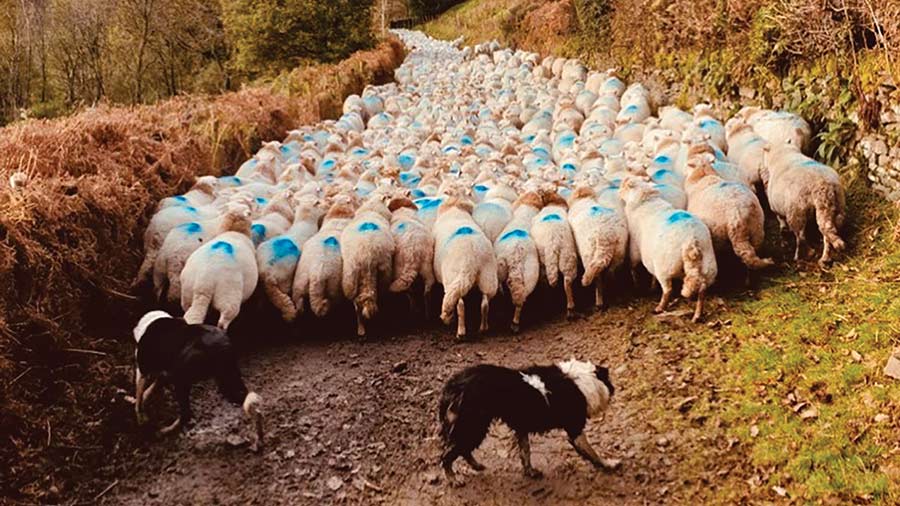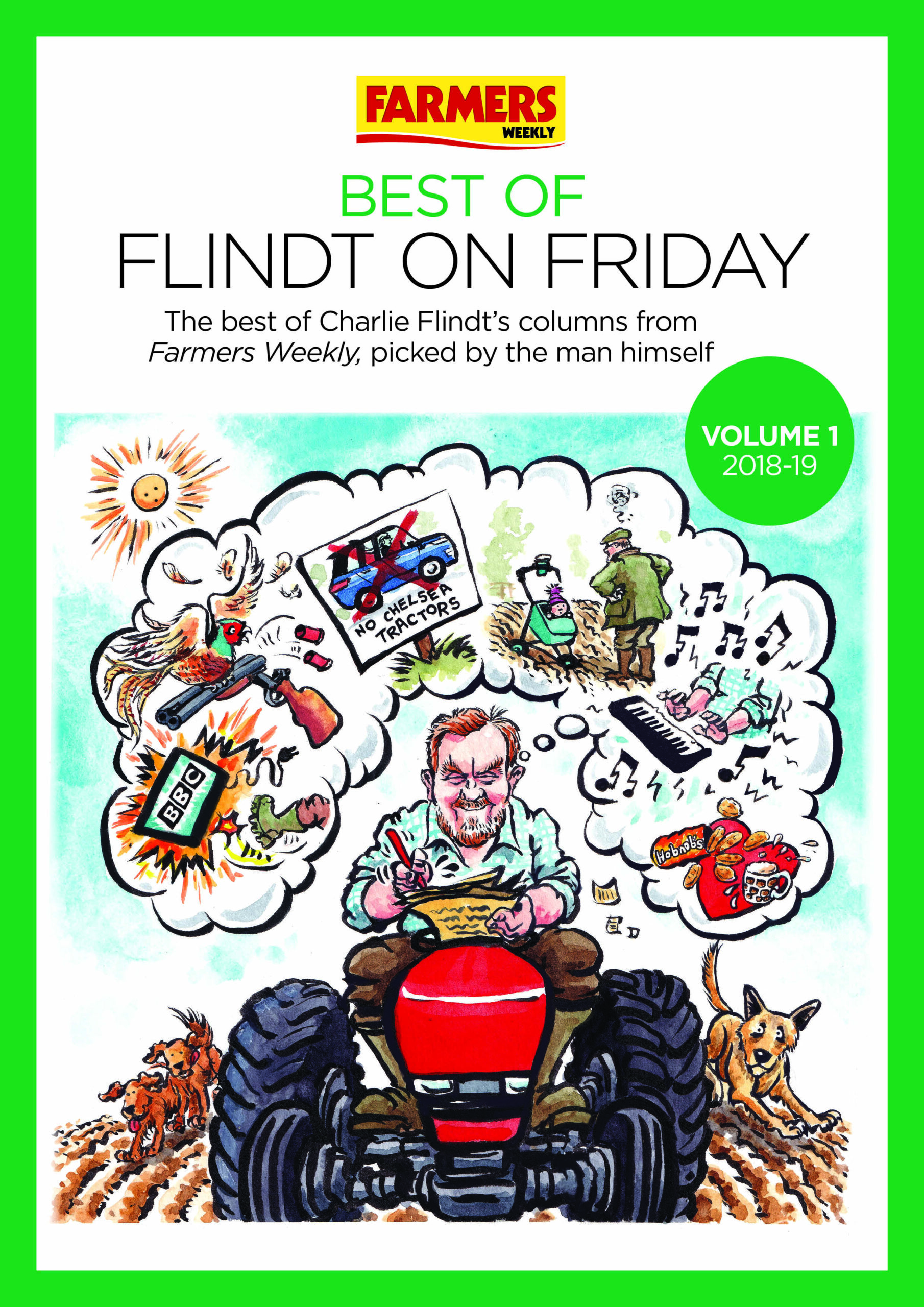The photo project telling farmers’ stories to the urban public
 © Katie Pugh
© Katie Pugh Researching ruminants and sustainability as a part of her PhD studies, Philippa Simmonds has been working with a group of farmers across the country to communicate farming stories through photography.
Philippa became interested in topics such as agricultural methane emissions and how they are represented on social media.
She decided to surface the individual stories of farmers across the country using a photography and digital storytelling platform called “PhotoVoice”.
See also: How farmers are helping to educate school children about agriculture
She asked farmers to take photos that help to tell their farming stories to bridge the divide that they felt between their world and urban communities.
Encouraging the participants to explore different methods of writing captions, from factual descriptions to poetry, Philippa has created a website to serve as a digital exhibition of their work.
You can see all of the farmers’ stories so far on farmervoices.co.uk. We highlight two of them below.
Farmers’ stories
Hill Farming in the South Wales Valleys – Katie Pugh
Based on her family farm in south Wales, Katie Pugh has a mixed livestock enterprise with 1,100 ewes and 40 suckler cows.
A keen photographer in her spare time, Katie enjoys taking pictures of her farm to share on social media, and sees it as a crucial way to connect with people from urban communities.
“It’s a way to engage with the public, to try to educate them and help them understand farming systems, and to get rid of some of the negativity and misunderstanding around farming,” says Katie.
“As a group of farmers, we were all concerned about the urban/rural divide and the misinterpretation of farming.
“We all want to reach out and help inform and educate people, so that they can make informed decisions about the environment, farming, food, and what they buy and eat.”
“You can tell people that this is how we produce food, and we’re sustainable and grass-fed.
“But if you show them a picture of cows, happy and grazing in a lush field of grass with wildflowers, there’s something about a picture that really helps them to connect with food and with nature.
“The urban community has no idea where their food comes from, so for them to try and imagine what grass-fed means, it is really difficult for them, so pictures are a great place to start.”

© Katie Pugh
“This picture tells a story; one of culture, heritage and tradition,” says Katie.
“Hill farming in South Wales is a part of that history and has always had a deep connection with the community.
“Although the coal mining industry has long gone, and the landscape has changed, the farming community remains the same.
“A constant, unwavering custodian of the landscape. Food producer, guardian of the land and some of the most precious natural resources.
“Traditional farming methods will be forever intertwined into our farming systems and way of life because they have to be.
“These traditional methods include hefting and shepherding livestock as well as lambing outdoors and keeping a purebred flock with genetics suited to and formed by the farm.
“Our ewe genetics date back over 300 years with not a single female line bought in.
“The South Wales Mountain ewe is indigenous to the South Wales Valleys and very much part of our heritage.
“The nature of the land restricts the ways in which we can farm and what sort of livestock or crops can be produced.
“Nearly 80% of the land in Wales is classed as a Less Favoured Area, meaning it’s not suitable for growing crops, especially crops that require a combine harvester, fruits, and vegetables.
“Being a hill farmer means the way we farm is governed by the weather, the type of land and its ability to grow grass.
“The breeds of livestock we keep are suited to the farm and can withstand harsh weather conditions and thrive through grazing poorer quality grass.”
Managing a herd of ‘hefted’ sheep – Katie Pugh
“Cynefin is a Welsh word meaning a place of belonging where nature feels right and welcoming,” says Katie.
“It is also the Welsh word used for a ‘heft’. Hefting is a traditional shepherding method for managing flocks on large areas of hill with communal grazing.
“Initially, sheep had to be kept in an unfenced area of land by constant shepherding.
“Over time, this has become learned behaviour, passed from ewe to lamb over succeeding generations.
“Lambs graze with their mothers on the ‘heaf’ belonging to their farm, instilling a lifelong knowledge of where optimal grazing and shelter can be found throughout the year.

© Katie Pugh
“Evidence also suggests that hefting can increase biodiversity compared to keeping sheep in fields,” she says.
“It means sheep have an improved knowledge of the grazed area, showing seasonal preferences for grazing different plant communities.
“The photo shows a group of hefted sheep that we’re bringing down to the farm to give some preventative medical treatment,” Katie explains.
‘I promise I’ll keep still, thank you for rescuing me from that large dog’ – Carron Craighead
Frustrated with the negative narrative surrounding red meat and livestock farming, Carron Craighead, who farms near Newcastle upon Tyne, got involved with the project to shed light on the positive side of food production.
Carron, who has a herd of suckler cattle and breeding ewes, captured photos of her daily life on the farm to educate the public on topics that they likely had no experience of.
“We had to pick five or six photographs that really portrayed life on the farm and what we would like to get across to the consumer,” says Carron.
“I had a photograph of Michael, my support worker, taking an EID reading from a sheep, and another picture showing me removing the stitches from a lamb after a dog-worrying incident.
“We had to create captions that would hopefully enthuse and interest an audience, to show how we look after our livestock and the extra things that we do to look after the countryside.”
Finding other benefits from participating in the project, Carron says that capturing the farm through photography is surprisingly therapeutic.
“Focusing on how we took the photographs, and listening to the other farmers, made me see the farm in another light.
“We tend to take these things for granted when you see them every day and perhaps don’t appreciate them as much, but by taking the photograph you stop to appreciate it.”

© Carron Craighead
“I’m busy taking the stitches out of this lamb, 10 days after it was stitched up by the vet after it was worried (attacked by a dog),” says Carron.
“Luckily, the damage was just to the lamb’s muscle and skin, so it recovered from the injury.
“In a lot of worrying cases you never find the dog, lambs have to be put down, or you don’t get any compensation for the vet bills.
“Even little dogs can cause a lot of problems – if they chase the in-lamb ewes then they can cause abortions or pneumonia.
“It’s hard work looking after the sheep anyway, and this is even more work for us.
“Farmers want everyone to enjoy the countryside and we love seeing people out walking in our area, it’s just about them keeping their dogs under control.”

